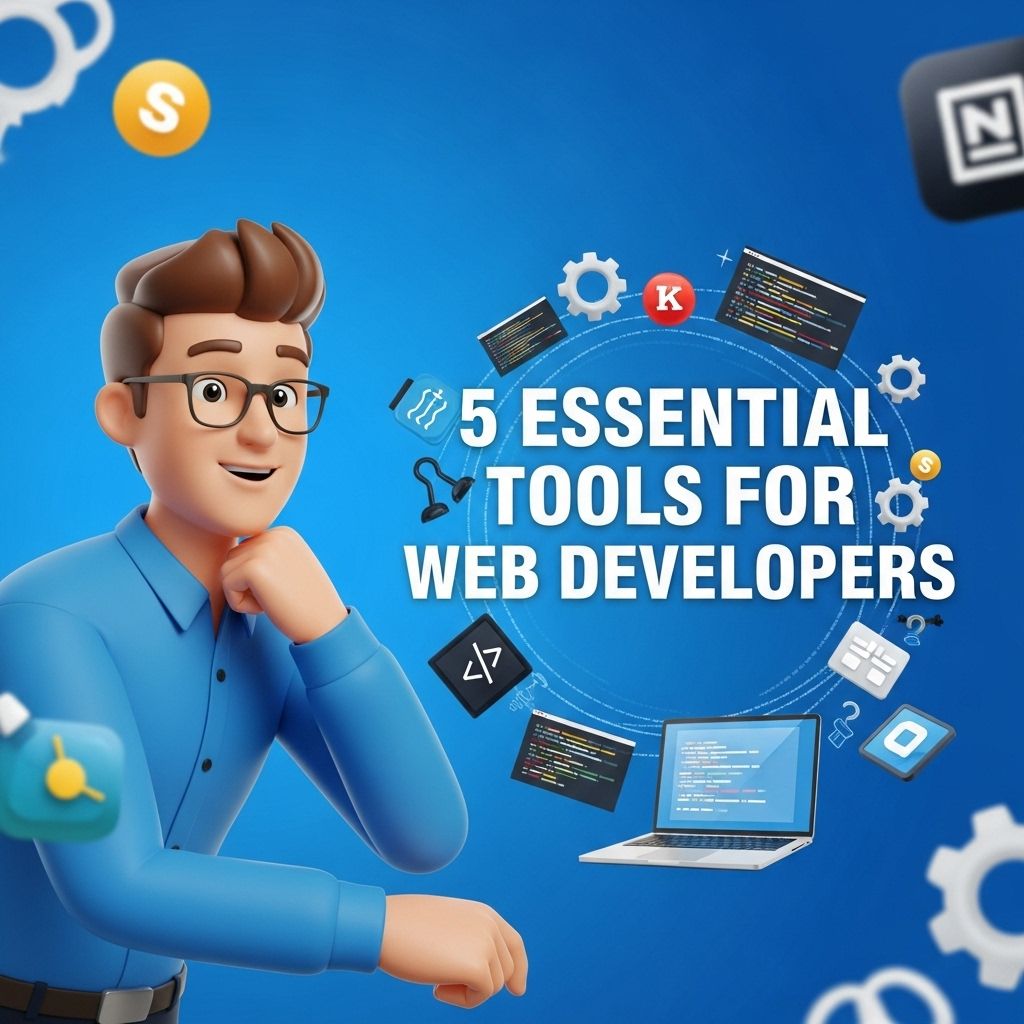As the landscape of web development continues to rapidly evolve, staying ahead of the curve requires not only skill but also the right set of tools. Whether you’re a seasoned developer or a newcomer to web technology, having an arsenal of effective tools can significantly enhance your productivity and output quality. In 2025, several tools have emerged as essential for web developers, catering to diverse aspects of the development process. This article delves into five indispensable tools that every web developer should consider integrating into their workflow.
1. Visual Studio Code
Visual Studio Code (VS Code) has been a favorite among developers for years, and its popularity shows no signs of waning. A lightweight yet powerful source code editor, VS Code supports various programming languages and comes equipped with numerous features that streamline the coding process.
Key Features:
- IntelliSense for smart code completions
- Built-in Git commands for version control
- Debugging capabilities directly within the editor
- Extensive marketplace for plugins and extensions
- Customizable themes and layouts
The strong community support and constant updates make VS Code a go-to choice for many web developers.
2. Figma
In 2025, design and development continue to intertwine closely, making tools like Figma more crucial than ever. Figma is a web-based interface design tool that enables collaborative design in real-time, allowing designers and developers to work together seamlessly.
Benefits of Figma:
- Real-time collaboration, perfect for remote teams
- Cloud-based storage for easy access
- Prototyping features to visualize user interactions
- Integration options with other developer tools
- Version history to track design changes
Whether you’re creating UI components or entire layouts, Figma serves as a powerful platform that bridges the gap between design and development.
3. Postman
For web developers working with APIs, Postman has become an essential tool for testing and managing API requests effectively. This robust tool simplifies the process of making HTTP requests, analyzing responses, and automating workflows.
Features of Postman:
| Feature | Description |
|---|---|
| API Testing | Create and run tests to ensure APIs work as intended |
| Mock Servers | Simulate API responses without needing a live server |
| Collections | Organize and group related API requests |
| Automated Reporting | Generate reports to analyze API performance |
| Environment Variables | Customize API endpoints based on different environments |
Postman has transformed how developers interact with APIs, making it simpler to ensure that applications communicate correctly.
4. Docker
As web applications become more complex, the need for consistent and efficient deployment grows. Docker has emerged as a leading tool for containerization, allowing developers to package applications with all necessary dependencies into containers that can run anywhere.
Advantages of Using Docker:
- Portability across different environments
- Isolation of applications for improved security
- Easy scaling and management of application components
- Integration with Continuous Integration/Continuous Deployment (CI/CD) pipelines
- Efficiency in resource utilization
By leveraging Docker, developers can create predictable and reproducible environments, reducing the risk of ‘it works on my machine’ issues.
5. GitHub
No web development toolkit is complete without version control, and GitHub remains the leading platform for managing code repositories. Beyond just version control, GitHub has evolved into a community hub for developers to collaborate, share, and showcase their work.
Core Features:
- Branch management for handling feature development
- Pull requests for code reviews and collaboration
- GitHub Actions for automating workflows
- Integrated project management tools
- Large community support and open-source projects
Whether you’re working on personal projects or collaborating with larger teams, GitHub facilitates a structured approach to code management.
Conclusion
The tools mentioned above represent just a fraction of what is available to web developers in 2025. However, they stand out as essential resources that can significantly enhance productivity, improve workflow efficiency, and foster collaboration among teams. As technology continues to evolve, being equipped with the right tools is crucial for anyone looking to make an impact in the world of web development.
By adopting these tools, web developers can not only streamline their processes but also keep pace with the rapidly changing demands of the industry, ensuring they remain relevant and effective in their craft.
FAQ
What are the top tools for web developers in 2025?
In 2025, essential tools for web developers include code editors like Visual Studio Code, version control systems like Git, frameworks such as React and Vue.js, design tools like Figma, and cloud services like AWS.
How can I choose the right framework for my web development project?
Choosing the right framework depends on your project requirements, team expertise, and scalability needs. Consider factors like performance, community support, and documentation.
What role do version control systems play in web development?
Version control systems like Git help developers manage changes to code, collaborate effectively, and maintain a history of project modifications, which is crucial for team projects.
Why is responsive design important for web development?
Responsive design ensures that websites function well on various devices and screen sizes, enhancing user experience and improving SEO rankings.
What is the significance of using cloud services in web development?
Cloud services provide scalable infrastructure, facilitate deployment, enhance collaboration, and offer various tools for modern web development, making them essential for developers.
How can design tools improve the web development process?
Design tools like Figma streamline the design process by enabling collaboration between designers and developers, allowing for better feedback loops and quicker iterations on design concepts.




